+447709283333 | info@damavandpro.com
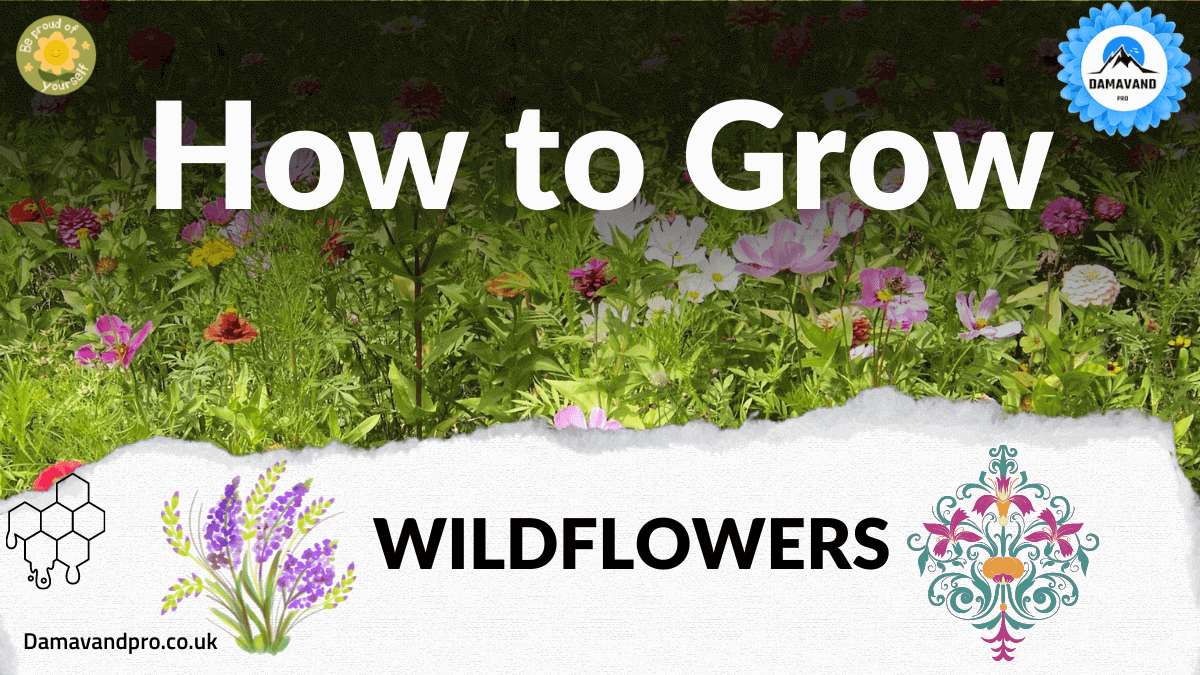
Wildflower Seeds: Planting for a Blooming Paradise – Is it Ever Too Late?
How Grow Wildflower seeds: Are you dreaming of a blooming paradise in your backyard? It’s never too late to turn that dream into a reality with wildflower seeds. These tiny powerhouses can transform your garden into a vibrant haven for bees, butterflies, and other pollinators. But you might wonder, is it really too late to start planting them? The good news is, no matter the time of year, there’s a wildflower solution for you.
With their diverse range of colors, shapes, and sizes, wildflowers add a touch of natural beauty to any space. The most important thing to note is that different wildflower species have different planting seasons. Some prefer a spring sowing, while others thrive when planted in the fall. So, even if it’s not the traditional planting time, you can still find species that will thrive given the current season.
In this article, we’ll explore the wonderful world of wildflowers and guide you on how to plan and prepare your garden for a stunning floral display. We’ll also provide helpful tips on selecting the right seeds, preparing the soil, and creating an optimal environment for these exquisite blooms. Get ready to embrace the wonders of wildflowers, and watch your garden transform into a paradise of color and life.
Introduction : Wildflower seeds
How Grow Wildflower Seeds If you have a meadow or other area in your yard that needs some extra color, wildflower seeds are the perfect solution. The trick is finding a sunny spot & planting the right amount of them. Here’s how to grow wildflowers from seeds:
Wildflower seed planting
Planting wildflower seeds is a great way to add beauty and biodiversity to your garden or outdoor space. Here are some tips for how to grow wildflower seeds:
Planting wild flower seeds
- Choose the right location: Wildflowers can be grown in a variety of soil types, but they prefer well-draining soil that is not too acidic or alkaline. Choose a location that gets at least 6 hours of sunlight per day.
- Prepare the soil: Loosen the soil to a depth of about 6 inches & remove any weeds or debris. If the soil is poor, you can add compost or other organic matter to enrich it.
- Sow the seeds: Scatter the seeds evenly over the prepared soil & gently press them into the soil. If you are planting a large area, you can use a seed spreader to evenly distribute the seeds.
- Water the seeds: Water the seeds thoroughly after planting to help them germinate. Keep the soil moist, but not waterlogged, until the seeds germinate.
- Thin out the seedlings: Once the seedlings have grown to about 2 inches tall, thin them out to about 6 inches apart. This will give the remaining plants room to grow & bloom.
- Mulch the area: Spread a layer of mulch over the soil to help retain moisture & suppress weeds.
With proper care, your wildflowers should begin to bloom within a few weeks to a few months, depending on the species & the climate. Enjoy your beautiful wildflower garden!
Can I just throw wildflower seeds around?
Find a sunny spot to plant your wildflower seeds. Flower seeds thrive when they’re planted in an area that receives at least six hours of direct sunlight each day.
Planting wildflower seeds is easy, Damavandpro says. “It’s very simple,” You’ll simply plant your seed in the ground.
How Grow Wildflower seeds
Flower seeds thrive when they’re planted in an area that receives at least six hours of direct sunlight each day, Peters says. The sun is necessary for photosynthesis—the process through which plants convert energy from the sun into usable nutrients such as carbohydrates & oxygen, which helps them grow.
Wildflowers need sunlight to grow, but not all parts of their anatomy are equally sensitive to it; some are better suited than others for exposure to bright, light-like summer days or winter nights when frost keeps everything else inside until springtime comes along again.
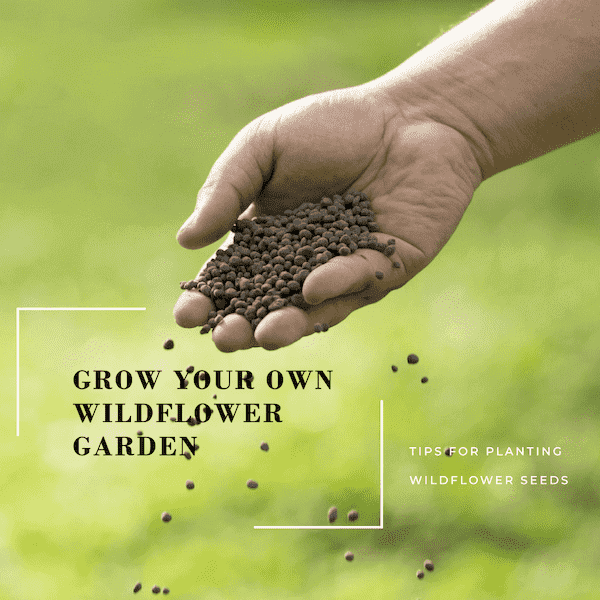
Wildflowers bloom once they’ve had enough time outdoors during those months when winter isn’t so cold anymore!
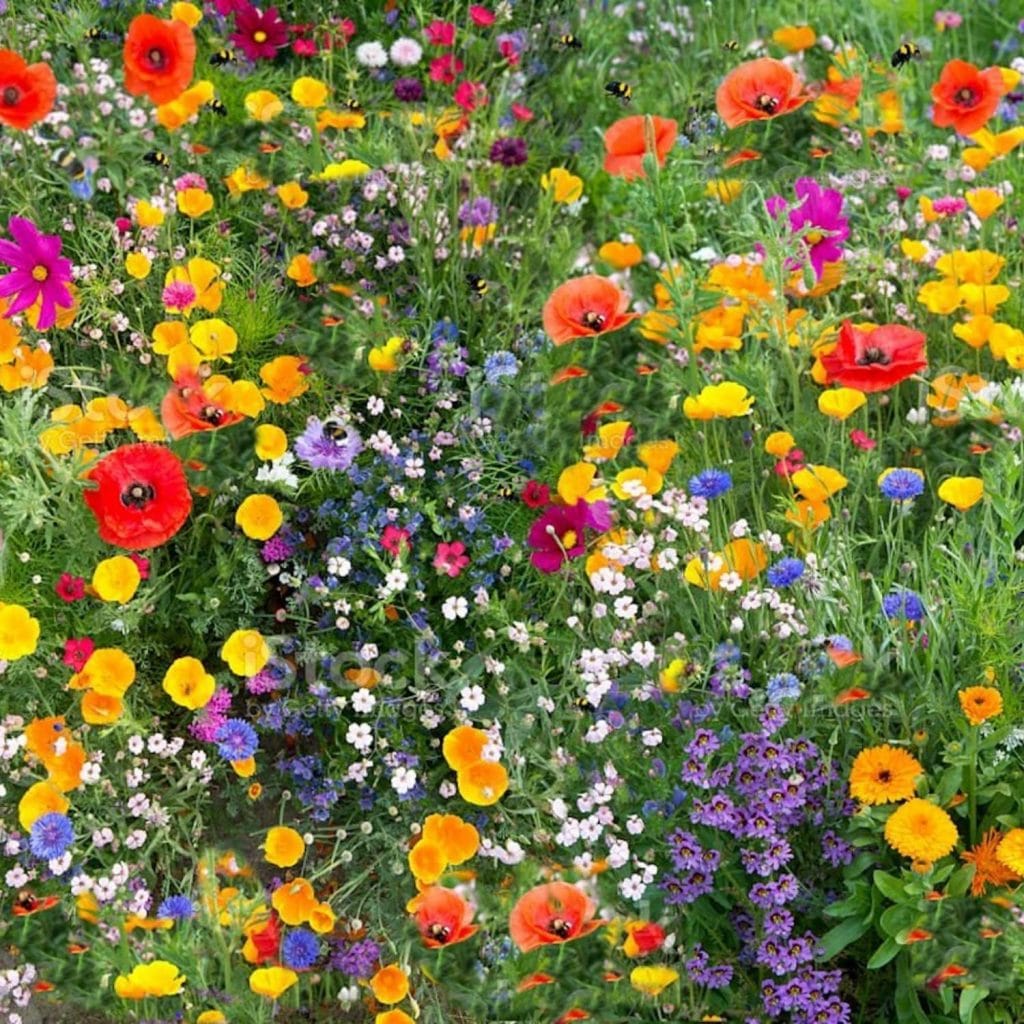
Decide between a seed mix or individual wildflower varieties
You can choose between a seed mix or individual wildflower varieties. A seed mix is a combination of seeds in which each variety grows in its own container, & the containers are planted together to create one large bed. The advantage of using this method is that you have more control over the final look of your garden since you can select different types of plants based on their size & color.
On the other hand, if you want to save money & don’t have time for such meticulous maintenance, then purchasing individual seeds may be right for you! However, if this option sounds too daunting (or even possible), consider purchasing an affordable commercial product instead; these contain many similar-looking varieties but with fewer differences between them so that they’ll blend together nicely after planting.
Choose planting seed method
- Planting by seed The most common method of planting seeds involves putting the seeds in the ground & covering them with soil.
- Planting by seed mix This involves mixing your seeds with a soil mixture that ensures they’ll germinate evenly & at a healthy rate of speed.
- Planting by seed packet or kit These kits contain everything you need for growing wildflowers from seeds—except the actual dirt! You’ll get instructions on how to prepare your garden plot, plus all sorts of helpful resources like fertilizer blends & watering schedules, so you can get started right away!
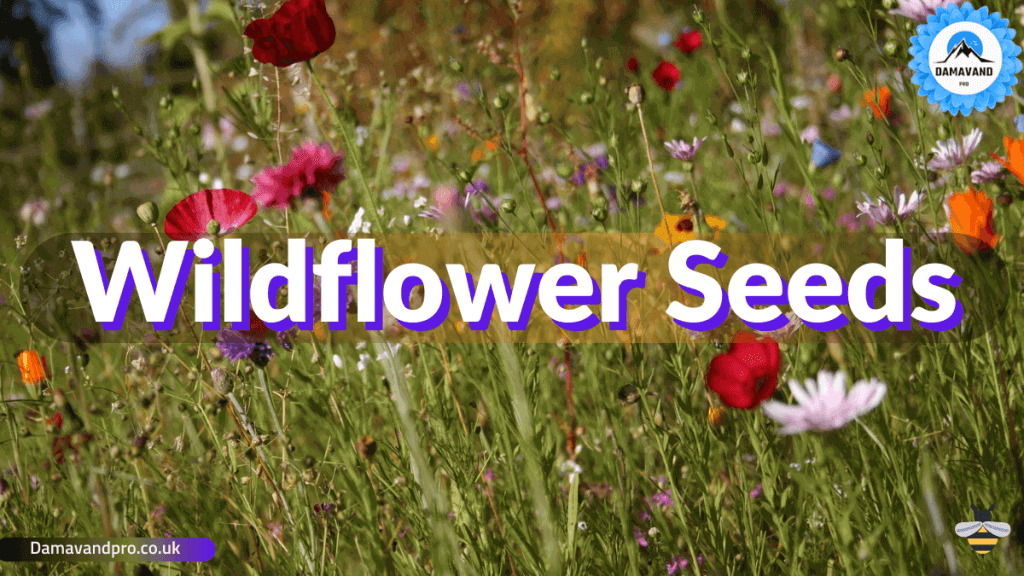
What month is best to plant wildflower seeds?
Pick the right time of year
The right time of year is important when it comes to growing wildflowers from seeds. Spring & fall are the best times, as they give your flowers a head start on the growing season.
When to plant wildflower seeds UK ?
When & where should wildflower meadows be planted? Depending on soil conditions, sow in March, April, or September. Autumn-sown seeds germinate & establish quickly in lighter soils, though some will not sprout until the following spring.
When should I plant wild flower seeds in the UK?
In the UK, the best time to plant wildflower seeds is typically in the autumn or spring.
when to sow wildflower seeds
Autumn is generally considered the best time to sow wildflower seeds because the soil is still warm, which helps the seeds germinate, and there is generally more rainfall. Late August to October is a good time to sow wildflower seeds in the UK.
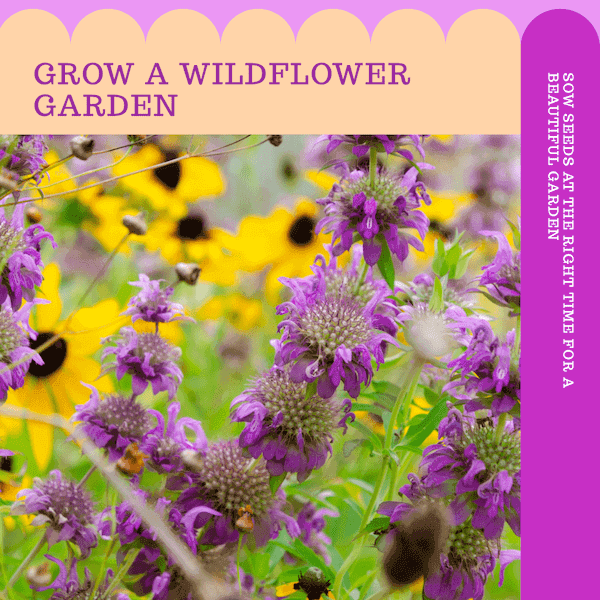
If you miss the autumn sowing window, then you can also sow wildflower seeds in the spring. Sowing in the spring can be done from March to May, but it’s best to wait until the soil has warmed up before sowing.
It’s important to choose the right wildflower seed mix for your location and soil type, as well as prepare the soil well by removing any weeds and ensuring it is free-draining. You can also consider adding some organic matter to the soil to help improve its structure and fertility.
Make sure to follow the instructions on the seed packet for the specific wildflower seeds you have chosen, and water regularly until the seedlings are established.
When to plant wildflower seeds
The best time to plant wildflower seeds depends on your climate & the specific species of wildflowers you are planting. In general, it is best to plant wildflower seeds in the fall or early spring, as this allows the seeds to take advantage of natural weather patterns to germinate & establish roots.
When do you sow wildflower seeds?
In the fall, wildflower seeds can be planted in areas with cold winters, as the seeds will benefit from the cold stratification process, which helps to break down the seed coat & improve germination rates. In the spring, wildflower seeds can be planted in areas with mild winters, as the seeds will benefit from the warm temperatures & long days that encourage growth.
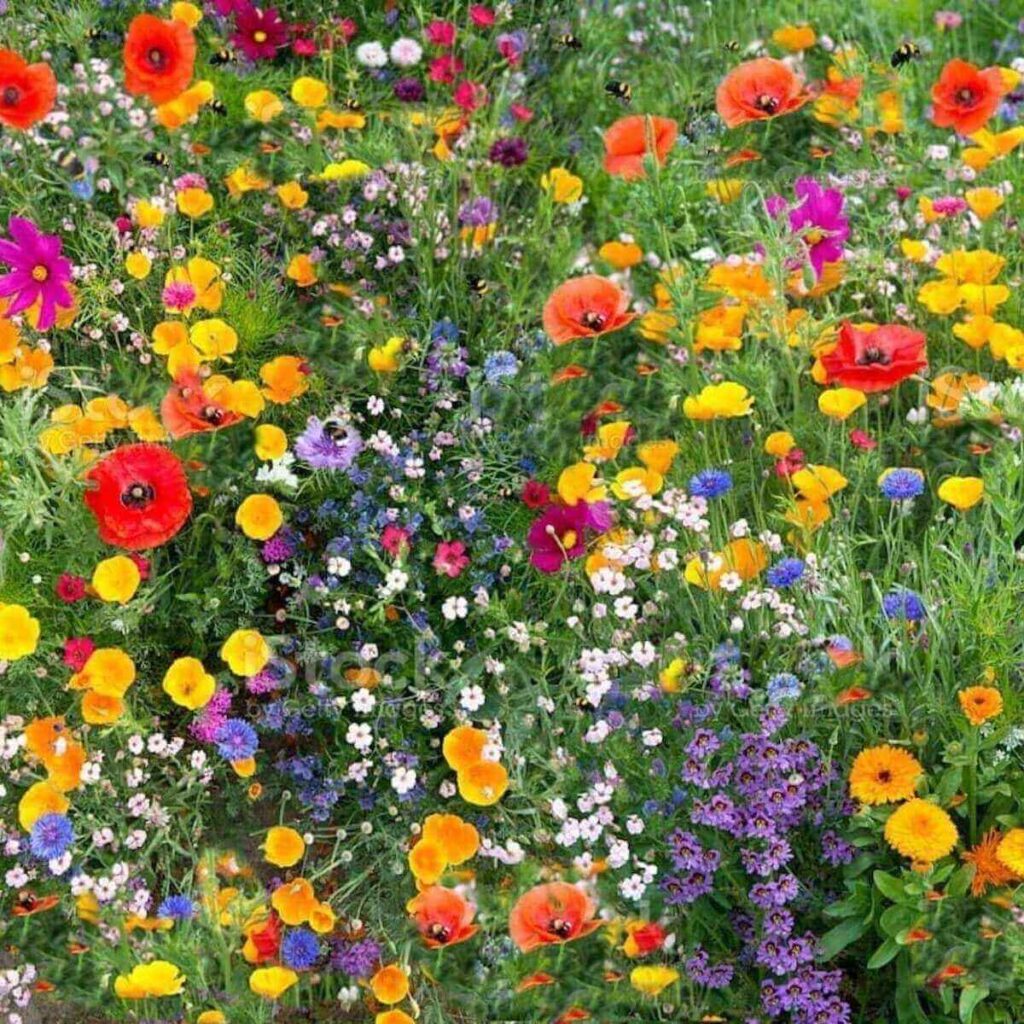
100g Pure Flower Mix
When to sow wildflower seed
When planting wildflower seeds, it is important to follow the specific planting instructions provided on the seed packet. This will typically include information on the ideal soil temperature & moisture levels for germination, as well as any specific requirements for the specific species of wildflowers you are planting.
It’s also a good idea to prepare the soil before planting by loosening the soil with a garden fork & removing any weeds or debris. This will help to ensure that the wildflower seeds have the best chance of germinating & establishing themselves in the garden.
Best time to plant wildflower seeds UK
The best time to plant wildflower seeds in the UK depends on the specific type of wildflowers you are planting and the region in which you live. In general, it is best to plant wildflower seeds UK in the fall or early spring.
Fall planting:
- In the fall, the soil is still warm from the summer, which helps the seeds germinate.
- The cooler temperatures of fall also help to keep the seeds from drying out.
- The fall rain & the winter snow will help to keep the seeds moist, which is essential for germination.
Spring planting:
- In the spring, the soil is warmer & there is more sunlight, which helps the seeds germinate.
- Spring planting is a good option if you want to see flowers blooming in the same year that the seeds are planted.
Regardless of whether you plant in the fall or spring, it is important to prepare the soil by removing any weeds & breaking up the soil to ensure that the seeds can germinate & grow. You should also follow the specific planting instructions provided with the seeds, as different types of wildflowers may have different requirements.
Is it Too Late to Plant Wildflower Seeds?
It is not too late to plant wildflower seeds, as long as the ground is not frozen & there is enough time for the seeds to germinate & grow before frost. The best time to plant wildflower seeds varies depending on your location & the specific types of wildflowers you are planting.
In general, it is best to plant wildflower seeds in the fall or early spring, when the weather is cool & moist. This allows the seeds to germinate & establish roots before the hot, dry summer weather arrives. However, if you live in a mild climate with no frost, you may be able to plant wildflower seeds year-round.
It is important to follow the specific planting instructions provided with the seed mix or individual species, as different types of wildflowers have different requirements for soil, moisture, & light.
Wildflower seeds: when to plant
Spring planting will give your flowers a head start on the growing season, while fall planting will help ensure that your plants thrive in cooler weather. A good rule of thumb is to plant more perennials at this time than annuals because they don’t need much sun exposure until summertime (which doesn’t come around until June).
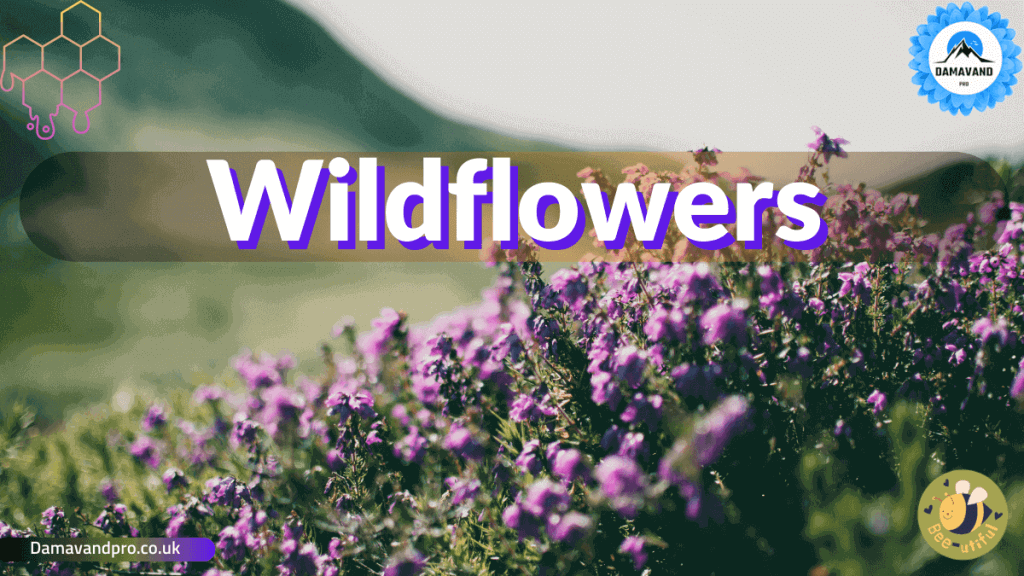
Wildflower seeds: when to plant
Break up the soil
To break up the soil, you can use a shovel, rake, or hoe. A pitchfork is also useful for this purpose.
If you’re using an ordinary garden fork & want to dig deeper than an inch or two into your garden beds, consider using a soil knife instead—it has a much narrower head than most forks, so it won’t leave any holes behind where seedlings might grow. You could also use a spade if you have one available (or another tool like this).
Get the Wildflower seeds wet in advance
- Get the Wildflower seeds wet in advance.
- Soak the Wildflower seeds in water for 24 hours, or until they start to germinate (this will help them to sprout). You can also soak them overnight in a solution of 2 tablespoons of hydrogen peroxide & 4 cups of warm water—this will kill any disease or fungus that may be on the seeds, but it won’t hurt anything else!
Avoiding overwatering Wildflower seed
Avoid overwatering Wildflower seed
Watering your seedlings is a delicate balance of knowing when to water & how much to provide. You want to avoid drowning them, but if you’re watering in the morning or evening & see that they’re still wet from overnight rain, then don’t worry about it—you can wait until it stops raining before watering again. If the weather is dry (or if you’ve been keeping an eye on your plant), then give it a thorough soak before moving on with planting season!
Keep the weeds & critters away
To keep the weeds & critters away, use a mulch cover to keep the soil compacted & control weeds better in the future. If you are using wildflower seeds from your garden, be sure to plant them at least 4 inches deep.
Use a mulch cover for new wildflower seeds & plants
A mulch cover is essentially a sheet of plastic or fabric that you place over the top of your seedlings & plants to keep them from being disturbed by animals. The idea is that if you put them under a little bit of cover, they won’t get stepped on as much.
The best materials to use for making mulch covers are:
- Plastic: This can be any kind of plastic sheeting, such as those used in garden beds or raised beds. Just make sure it’s not too heavy! You don’t want it to weigh down your seedlings & plants too much.
- Fabric: You can use any kind of fabric you have lying around the house, but cotton sheets are the best since they are sturdy enough to withstand tearing even when the wind (or other force) moves them around. If possible, try not to use anything thicker than cotton; otherwise, this could cause damage over time due to moisture buildup underneath where water gets trapped between layers during rainstorms, etcetera.
Walking on Your Meadow to Promote Soil Compaction & Weed Control
If you’re planting a meadow area, walk on it occasionally to help keep the soil compacted & control weeds better in the future (before your wildflowers grow tall).
- Don’t walk on the soil when it’s too wet. Wetter soil retains more water than dry soil does, which can cause plants to rot or become diseased if they’re not watered correctly. You can also get sick from walking through standing water that has been left where it collects after rainfall or irrigation from sprinklers.
- Don’t walk on the wildflower seeds while they’re still young; this will damage them & possibly kill them altogether! The best time to walk through an area where there are flowers is when they’ve just bloomed. After this point, plants will have already started producing seeds & should last longer without being trampled by careless humans who don’t know how important these creatures are yet (or try anyway). It’s also important not to go back into areas where there might be more mature flowers because those ones may already be gone by then due to either accidentally stepping on them (like stepping onto someone else’s shoes) or intentionally trying to find something new but failing miserably because everyone else was already finished looking around before coming back home again.
How to Plant Wildflower Seeds for a Beautiful Garden
For optimal results in creating your meadow, the ideal time to sow seeds is during autumn, and alternatively, spring is also suitable.
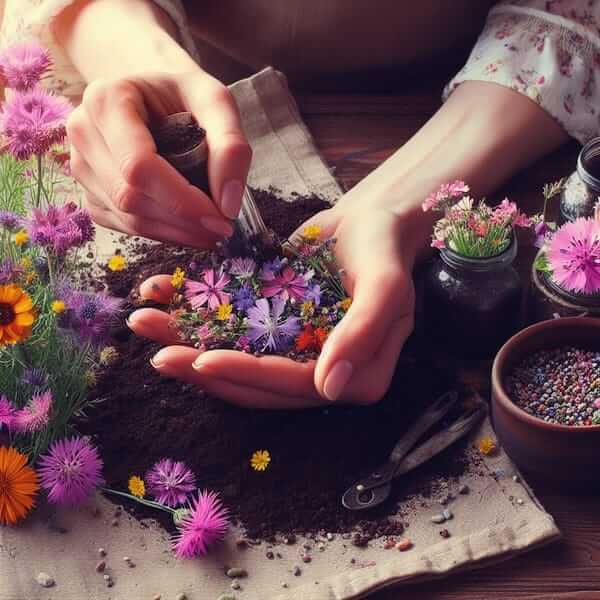
- To prepare for seeding, create a fine top layer of soil by clearing the ground of any unwanted vegetation, leaving areas of bare soil for sowing. Utilize local seeds whenever possible, prioritizing UK native seeds to avoid introducing non-native species. Here’s a tip: consider seed mixes that include yellow rattle, a plant parasitic to grass, preventing excessive grass growth and improving the chances of your wildflower meadow thriving.
- For effective seeding, allocate 5g of seed per square metre. Scatter the seeds evenly as you walk across the ground, then rake the soil and traverse the area again to ensure the seeds make contact with the soil. Maintain regular watering until the meadow is established.
- Be mindful of birds during germination, as they are attracted to wildflower seeds. Some gardeners prefer using netting to protect the seeds during this crucial period.
Wildflower seeds are a great way to add a splash of color & variety to your garden. These seeds produce a range of beautiful flowers that are native to your area, making them well-suited to local growing conditions. Here’s how to plant wildflower seeds in your garden:
- Choose the right location: Wildflowers prefer sunny, well-draining locations. Look for a spot in your garden that gets at least 6 hours of sunlight per day & has good drainage. Avoid areas that are prone to standing water or heavy shade.
- Prepare the soil: Wildflowers are not particularly picky about soil, but they do prefer a loose, well-draining soil. If your soil is heavy or compacted, you may want to loosen it up with a garden fork or add some compost to improve drainage.
- Sow the seeds: Wildflower seeds are small, so it’s best to sow them in a seed tray or pot & then transplant the seedlings once they have germinated. You can also sow them directly in the ground, but be sure to follow the recommended seed spacing on the back of the seed packet.
- Water the seeds: Water the seeds gently to help them germinate. Keep the soil moist, but be careful not to overwater, as this can cause the seeds to rot.
- Fertilize as needed: Wildflowers are generally low-maintenance plants, but you can fertilize them if you want to encourage more vigorous growth. A balanced fertilizer (such as 10-10-10) is usually sufficient.
By following these simple steps, you can enjoy a beautiful wildflower garden in no time!
Sow wildflower seeds UK
To sow wildflower seeds in the UK, follow these steps:
- Choose a suitable location: Wildflowers can be grown in a variety of locations, including gardens, meadows & even pots or containers. Choose a location that gets at least 6 hours of sunlight per day & has well-draining soil.
- Prepare the soil: Wildflowers prefer loose, well-draining soil. If necessary, loosen the soil with a fork or tiller & remove any weeds or debris. You can also enrich the soil with compost or organic matter to help improve drainage & fertility.
- Sow the seeds: scatter the wildflower seeds over the prepared soil, being careful not to plant them too deeply. You can use your hand to gently sprinkle the seeds over the soil, or use a seed spreader if you have a larger area to cover.
- Cover the seeds: Once the seeds are sown, cover them lightly with a thin layer of soil or compost. Alternatively, you can sow the seeds on top of the soil & then cover them with a layer of mulch to help keep the soil moist & prevent erosion.
- Water the seeds: Water the seeds gently to help them germinate. Be sure to keep the soil moist, but not waterlogged, until the seeds have sprouted & established themselves.
By following these steps, you can successfully sow wildflower seeds in the UK & enjoy a beautiful display of flowers in your garden or outdoor space. Remember to be patient, as it can take a few weeks for the seeds to germinate & start growing.
How long do wildflower seeds take to grow?
When the conditions are right, wilding seeds can sprout within 2–3 weeks of germination. Annuals can bloom within 2–3 months of germination. Biennials grow foliage in their first season & bloom in their second season.
What do wildflower seeds look like?
Flower seeds come in a wide range of sizes, shapes & colors, depending on the specific type of wildflower. Some common characteristics of wildflower seeds include:
- Small size: Many wildflower seeds are quite small, ranging in size from a few millimeters to about a centimeter in length.
- Hard exterior: Wildflower seeds often have a tough, hard exterior that helps protect them from damage & pests. This can make them difficult to germinate, but it also helps ensure their survival in harsh conditions.
- Varying colors: Wildflower seeds can come in a wide range of colors, including shades of brown, black, gray, green & red. Some seeds may also have distinctive patterns or markings.
- Unique shapes: Wildflower seeds can have a variety of shapes, including ovals, cylinders, discs, & more. Some seeds may be smooth & round, while others may be more irregular in shape.
In general, wildflower seeds are small & hard, with a wide range of colors & shapes. They are often quite resilient & able to withstand harsh conditions, making them well-suited for growing in a variety of environments.
Frequently Asked Questions about Wildflower Seeds
When is the best time to plant wildflower seeds?
In general, the best time to plant wildflower seeds is in the fall or early spring, when the soil is cool & moist. This allows the seeds to germinate & establish roots before the hot weather arrives. In some regions, it may also be possible to plant wildflower seeds in late winter or early summer.
Do I need to pre-germinate wildflower seeds?
Pre-germinating wildflower seeds can help improve the germination rate, but it is not strictly necessary. If you do choose to pre-germinate the seeds, you can do so by placing them between damp paper towels or in a damp seed tray. Keep the seeds moist & in a warm location until they germinate.
Do I need to thin out the wildflower seedlings?
Yes, it is usually necessary to thin out the wildflower seedlings to give the remaining plants enough room to grow & bloom. Once the seedlings have reached about 2 inches in height, thin them out to about 6 inches apart.
How do I care for my wildflower garden?
To care for your wildflower garden, keep the soil evenly moist, but not waterlogged. Water the plants deeply once or twice a week, depending on the weather. Mulch the area with a layer of organic material to help retain moisture & suppress weeds. Fertilize the plants with a balanced fertilizer once or twice a year, following the manufacturer’s instructions.
What are wildflower seeds?
Wildflower seeds are seeds that come from plants that grow in the wild, rather than being cultivated. These seeds can include a variety of different species and are often used to create natural and attractive gardens or to restore habitats.
When should I plant wildflower seeds?
The best time to plant wildflower seeds is in the fall or spring, depending on your climate. Fall planting allows the seeds to overwinter and germinate in the spring, while spring planting allows the seeds to germinate immediately.
How do I prepare the soil for planting wildflower seeds?
To prepare the soil for planting wildflower seeds, you should remove any weeds or grasses and loosen the top few inches of soil. You may also want to add some compost or other organic matter to improve the soil quality.
How do I sow wildflower seeds?
Sow wildflower seeds by scattering them over the prepared soil and lightly raking them in. Be sure to water the area regularly until the seeds have germinated and established themselves.
What types of wildflower seeds should I plant?
The best types of wildflower seeds to plant depend on your location and climate. Look for seeds that are native to your area or that are well-suited to your growing conditions.
How long does it take for wildflower seeds to germinate?
The germination time for wildflower seeds can vary depending on the species and growing conditions. Some seeds may germinate within a few days, while others may take several weeks or even months.
How often should I water my wildflower seeds?
You should water your wildflower seeds regularly, especially during the germination period. Once the plants are established, they will require less water, but you should still water them during dry spells.
How do I care for my wildflower garden?
To care for your wildflower garden, you should remove any weeds or invasive plants that may grow and compete with your wildflowers. You may also want to deadhead spent blooms to encourage further blooming and growth.
Can I use wildflower seeds to attract pollinators?
Yes, planting wildflower seeds is a great way to attract pollinators like bees, butterflies, and hummingbirds to your garden. Be sure to choose seeds that are particularly attractive to the pollinators you want to attract.
I hope this helps! Let me know if you have any other questions.
Conclusion
If you’re looking for a quick & easy way to decorate your yard, wildflowers are a perfect choice. Not only do they look great, but they also attract pollinators like bees & butterflies into your garden. You can even make money by selling cut flowers or seeds from your plants!
-
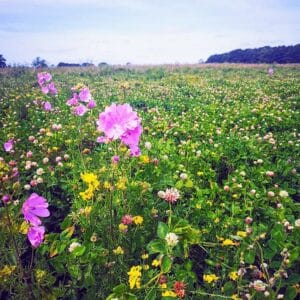 Flower Seeds Mix UK Garden: 1 Kg Nectar£29.00
Flower Seeds Mix UK Garden: 1 Kg Nectar£29.00 -
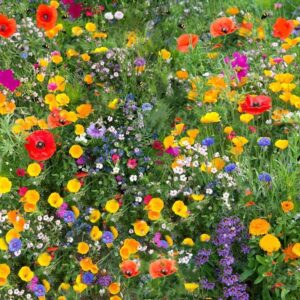 Wildflower Seed Mix Premium£3.99 – £50.00
Wildflower Seed Mix Premium£3.99 – £50.00 -
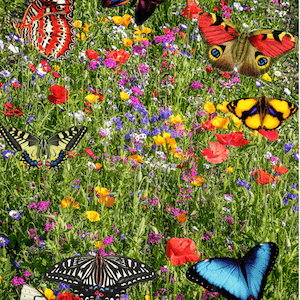 1kg Wildflower Seeds UK: 21 Species for Pollinator Attraction£69.99
1kg Wildflower Seeds UK: 21 Species for Pollinator Attraction£69.99 -
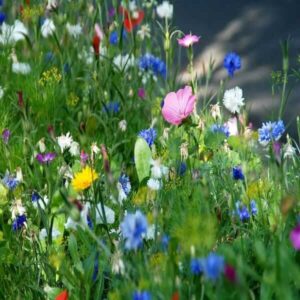 Part Shade Flower Seeds: Transform Shaded Spaces into a Vibrant Oasis£2.99 – £529.99
Part Shade Flower Seeds: Transform Shaded Spaces into a Vibrant Oasis£2.99 – £529.99 -
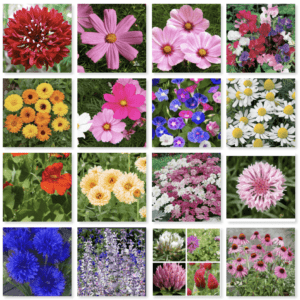 Organic Wildflower Seed Mix: 16 Varieties 100g Bag£18.00
Organic Wildflower Seed Mix: 16 Varieties 100g Bag£18.00 -
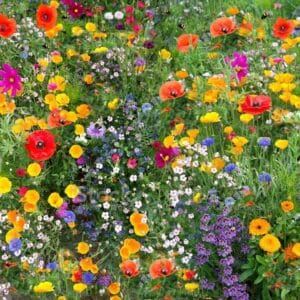 20kg Wildflower Seeds Mix£799.00
20kg Wildflower Seeds Mix£799.00 -
 3KG Bulk Wildflower Seed Mix£80.00
3KG Bulk Wildflower Seed Mix£80.00 -
 250g Naturalising Wild Flower Seeds:£15.00
250g Naturalising Wild Flower Seeds:£15.00 -
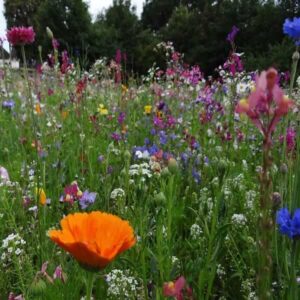 Wildflower Seed Packets£6.99 – £909.99
Wildflower Seed Packets£6.99 – £909.99

I actually wanted to thank you for these marvelous tips you are showing at this website. My extensive internet investigation has at the end of the day been recognized with awesome facts to talk about with my friends. I feel privileged to have come across the website and look forward to have more excellent reading time here. Thanks a lot once again for all the details.
For effective gardening, you must consider your environment and weather conditions while deciding when to grow wildflower seeds. However, the best time to sow wildflower seeds is in the fall, from September to November, or in the spring, from February to June.
For my part, it is higher than a bouquet of flowers.
Great goods from you, man. I’ve remember your stuff prior to and you’re just too magnificent. I actually like what you have received here, really like what you are saying and the way during which you say it. You are making it enjoyable and you still take care of to stay it smart. I cant wait to read far more from you. That is really a tremendous web site.
Wow, this article is fastidious, my younger sister is analyzing these kinds of things, therefore I am going to convey her.
To grow wildflower seeds successfully, consider sowing them in the fall (September to November) or spring (February to June) while taking into account your local environment and weather conditions. This will optimize their chances of flourishing and yielding beautiful blooms.
Thanks for sharing your thoughts about Garden design. Regards